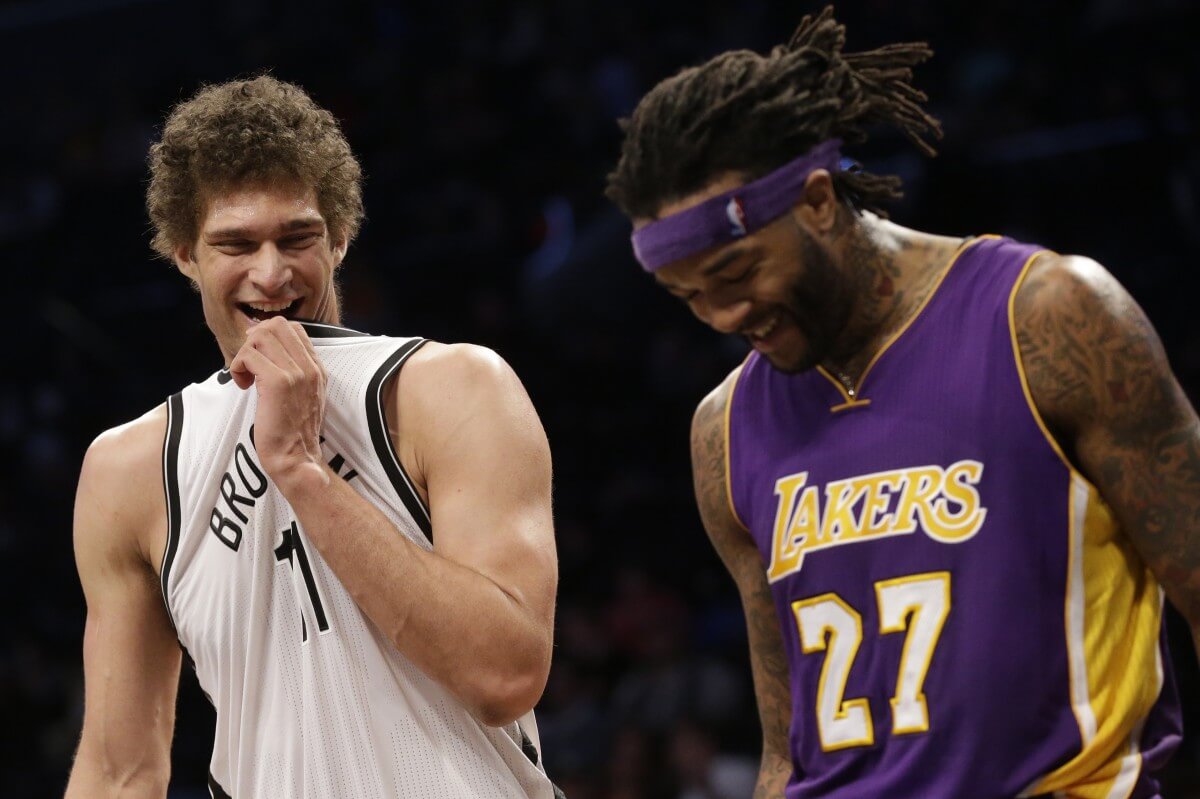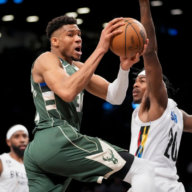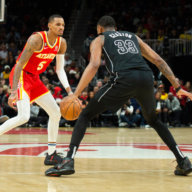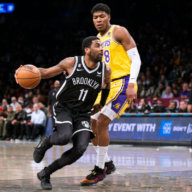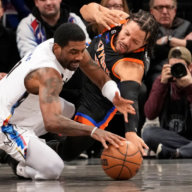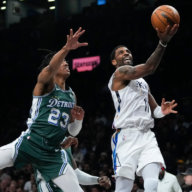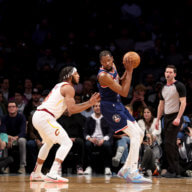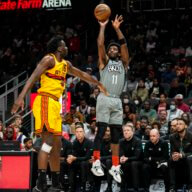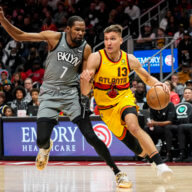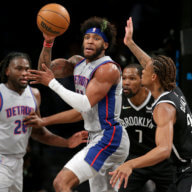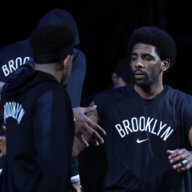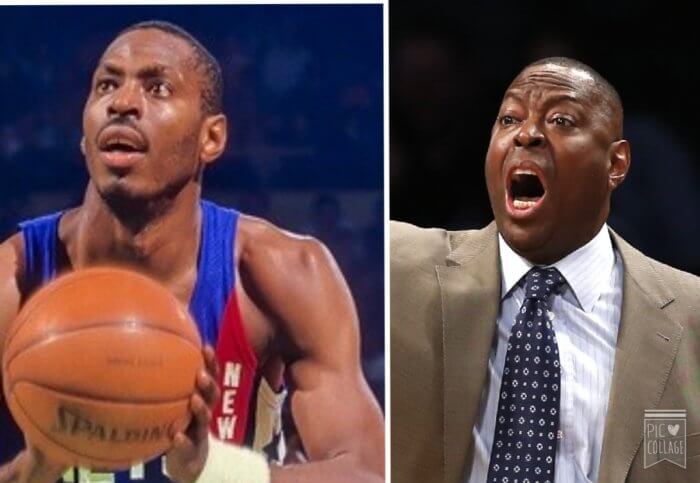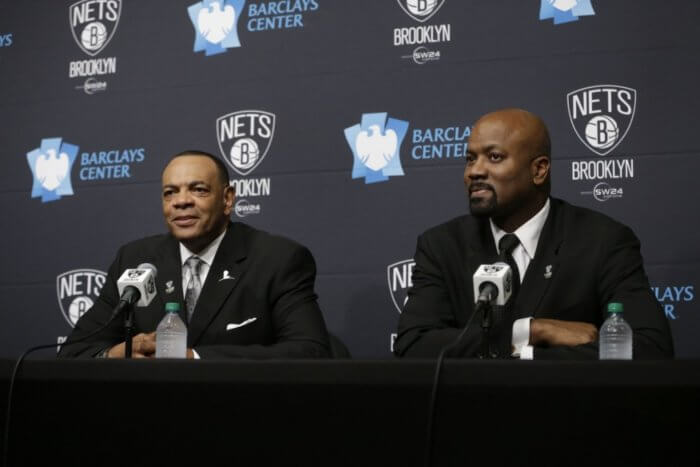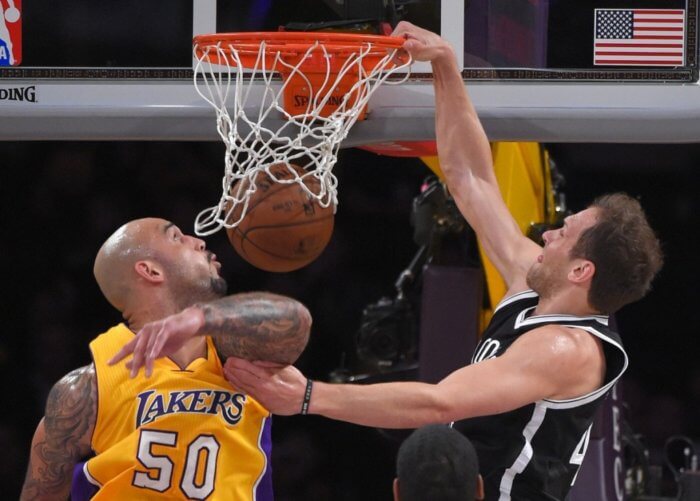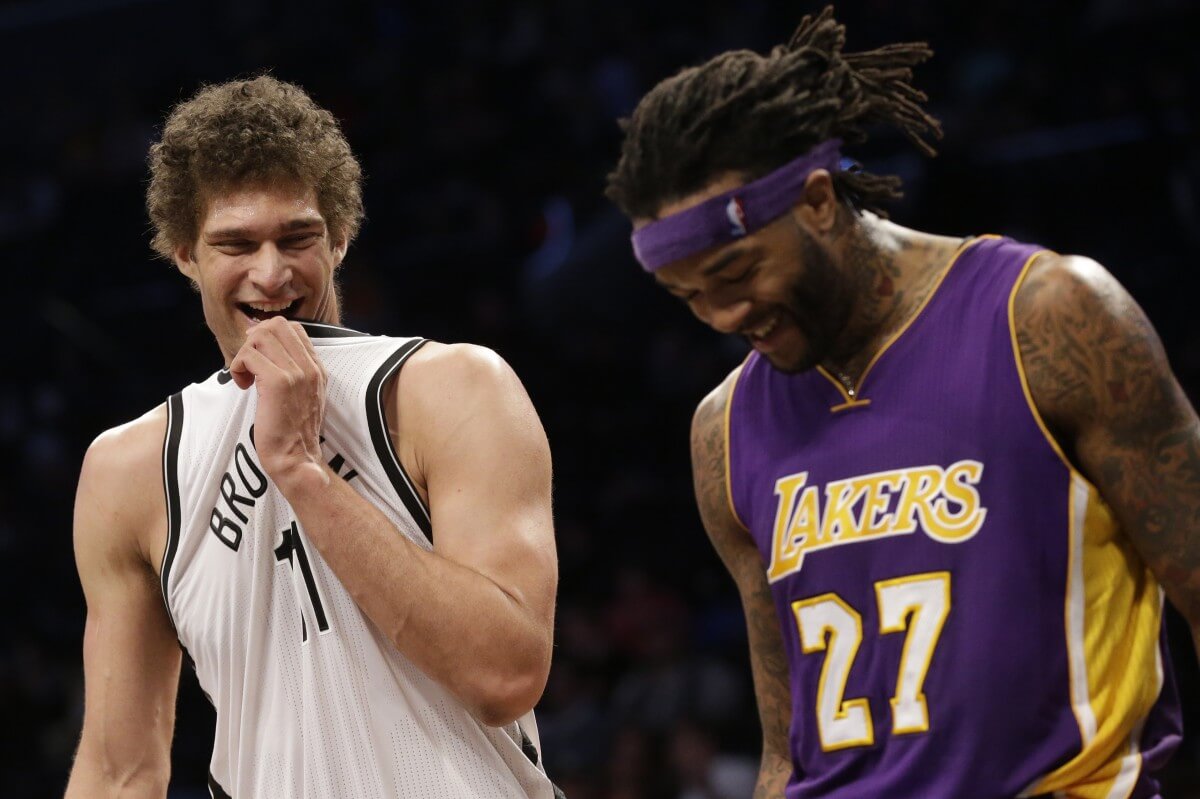
Brook Lopez: Three years, ~$60 million.
As I said yesterday, Lopez getting this kind of money was a foregone conclusion. The only real question in Lopez’s deal came down to years: if he’d elect to go with a one- or two-year deal and try to take advantage of the rising cap sooner, or shoot for maximum security with a five-year contract that would’ve all but eliminated his chances at getting a post-TV deal maximum contract. He & the Nets split the difference by giving him three years, reportedly without any options. That locks up Lopez at a below-max — and likely below-market — price for the last two seasons.
Lopez will be 30 by the end of his contract, and since his skillset is one that lasts beyond youth, he could secure another max or near-max deal if he’s still healthy and productive. That’s a big “if,” given his shaky right foot and recent history of missed games (144 in the last four years), but it’s possible.
He got the deal because the Nets had no other recourse for talent, he’s a decent rim protector, and he’s by far their best scorer. But that aside: Lopez’s value comes less from the post-up skills that cemented his name in the league and more from his evolving value as a pick-and-roll finishing threat. Lopez’s skills in the post, while numerous, are becoming quickly outdated as the NBA evolves into a league that puts a premium on playmaking.
To be clear: there is value in having an effective post-up player, the disconnect lies in what defines “effective.” NBA offenses thrive when they create 2-on-1/3-on-2/4-on-3 situations, which are the easiest road to open shots in the paint and beyond the arc. Post-ups can lead to those double-teams and spot-ups as much as driving and kicking can.
But if you can score over anyone and can’t pass out of anytwo, that’s a problem. That’s where Lopez’s issues lie: he’s one of the league’s best one-on-one scorers in the post but struggles to create shots for others on a consistent basis. Lopez averaged fewer than one assist per 36 minutes for the first time in his career last season, and he is not a skilled passer out of the post. For every nine times he tried to score in the post, he only made one pass that led directly to a teammate’s shot.[note]All numbers herein according to Synergy Sports Technology.[/note]
It’s not a bad thing to have a scorer with his length on the floor, but defenses can suck in on Lopez if they know him as only a finisher. when he’s forced into a situation where he needs to kick out, he rarely does so in a way that does anything but reset the offense, and doing so takes valuable seconds off the shot clock.
Lionel Hollins realized that about Lopez in February. In a conversation the two had around February 6th, Hollins told Lopez he didn’t want him to be a one-on-one player anymore, using him in more pick-and-roll plays and less post-ups. The numbers bear that out: Only 22 percent of Lopez’s scoring chances[note]Counted as any play that ends in a turnover, shooting foul, or shot attempt[/note] came out of post-up plays, a career-low by a wide margin (chart below), and those numbers declined sharply after February 6th (chart right).[note]Interestingly enough, Lopez made more passes that led to shots or shooting fouls after February 6th as well, despite posting up far less.[/note]
It makes sense by the scoring numbers — Lopez averaged 1.08 points per possession finishing roll plays (52.9 FG%) and just 0.94 (46.3 FG%) in the post, and limiting Lopez’s post-ups limits the need for Lopez to pass. But it’s also masking the issue rather than developing it,[note]Which for Lopez, may be the right thing to do![/note] and if he’s not directly involved in a scoring play, it puts a ceiling on how effective he can be over the 75-ish possessions he might play in any given game. Any possession where he holds the ball for longer than two seconds is probably doing more harm than good.[note]Lopez’s field goal percentage dipped from 55.9% to 43.5% when he held the ball for longer than two seconds. That’s obviously not to say that he should just fling up any damn shot he can on the catch, but that if he’s put in a back-down or slow iso situation, it’s less effective than when the team finds him for a quick look.[/note]
If he can continue to develop as a pick-and-roll finisher with whoever happens to be his primary point guard next season, that’s a huge plus and something to build on from the end of last season. If he develops his passing out of the post — or Hollins continues to slowly phase out Lopez’s post-ups unless the offense is in shot-clock panic mode — that’s all the better.
Lopez also improved dramatically on the offensive glass in the second half of last season (8.6% offensive rebounding percentage before the All-Star break to a robust 14.2% after), and he experienced another offensive glass uptick when paired with now-entrenched frontcourt partner Thaddeus Young, though it’s fair to argue that Young’s lack of rebounding is a hindrance on the team’s overall ability to control the glass.
He’s also got an incredible array of facial expressions. Might be worth the max alone.
Despite his clear limitations, Lopez is talented as hell, and when you have talent, you find ways to make it work. When he’s healthy he’s one of the biggest mismatches in the NBA: there’s only a handful of players long enough to match Lopez on one of his high floaters, and the ease with which he connects on pick-and-pop floaters is hard to match. Even if he doesn’t improve his passing, they can mask that deficiency by surrounding him with playmakers, limiting his touches in the post and maximizing him as a pick-and-roll finisher might be the way to go.
Ultimately, it’s hard to grade this signing because it’s not one that required a lot of negotiation or thought. It just is. The Nets had nowhere to go but lateral. They’re not at a crossroads; they’re stuck peering over a crack from a self-caused earthquake. They’ll either stumble down for years or somehow find a lifeline to the other side. Brook Lopez is one of their two shots at bridging that gap.
So I guess three years isn’t bad.
GRADE: A-

